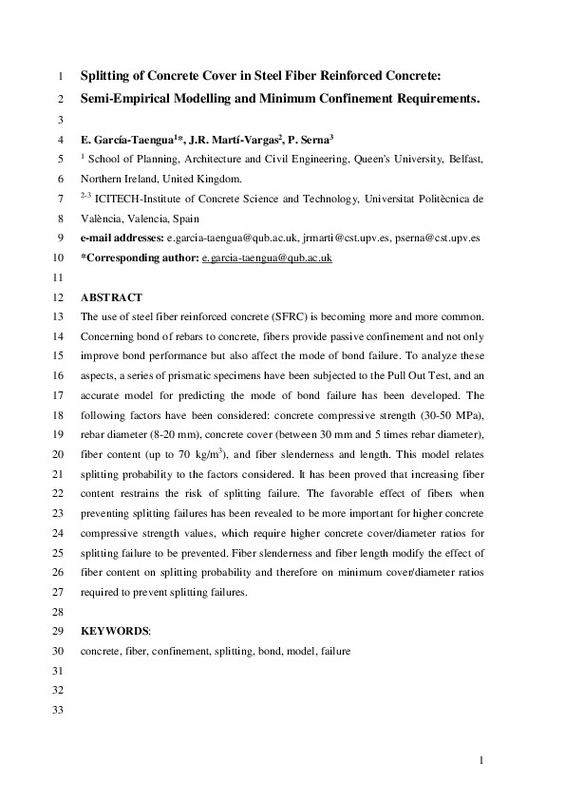JavaScript is disabled for your browser. Some features of this site may not work without it.
Buscar en RiuNet
Listar
Mi cuenta
Estadísticas
Ayuda RiuNet
Admin. UPV
Splitting of concrete cover in steel fiber reinforced concrete: Semi-empirical modeling and minimum confinement requirements
Mostrar el registro completo del ítem
García Taengua, EJ.; Martí Vargas, JR.; Serna Ros, P. (2014). Splitting of concrete cover in steel fiber reinforced concrete: Semi-empirical modeling and minimum confinement requirements. Construction and Building Materials. 66:743-751. https://doi.org/10.1016/j.conbuildmat.2014.06.020
Por favor, use este identificador para citar o enlazar este ítem: http://hdl.handle.net/10251/51778
Ficheros en el ítem
Metadatos del ítem
| Título: | Splitting of concrete cover in steel fiber reinforced concrete: Semi-empirical modeling and minimum confinement requirements | |
| Autor: | García Taengua, Emilio José | |
| Entidad UPV: |
|
|
| Fecha difusión: |
|
|
| Resumen: |
The use of steel fiber reinforced concrete (SFRC) is becoming more and more common. Concerning bond
of rebars to concrete, fibers provide passive confinement and not only improve bond performance but
also affect the mode ...[+]
|
|
| Palabras clave: |
|
|
| Derechos de uso: | Reconocimiento - No comercial - Sin obra derivada (by-nc-nd) | |
| Fuente: |
|
|
| DOI: |
|
|
| Editorial: |
|
|
| Versión del editor: | http://dx.doi.org/10.1016/j.conbuildmat.2014.06.020 | |
| Código del Proyecto: |
|
|
| Agradecimientos: |
The authors of this work wish to thank both the Research Bureau of the Spanish Ministry of Science and Innovation and the 'Plan E' programme for the funding of the project 'BIA 2009-12722', this research being a part thereof.[+]
|
|
| Tipo: |
|






![[Cerrado]](/themes/UPV/images/candado.png)



